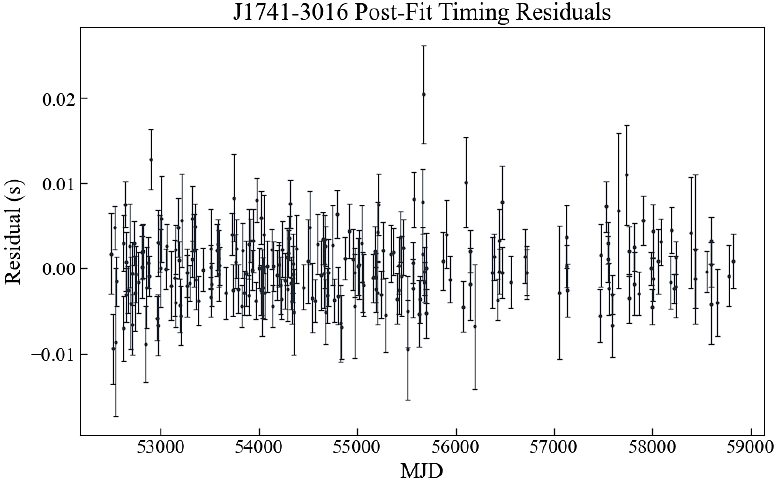Long-Term Timing Analysis of PSR J1741-3016: Efficient Noise Characterization Using PINT

Long-Term Timing Analysis of PSR J1741-3016: Efficient Noise Characterization Using PINT
Yirong Wen, Jingbo Wang, Wenming Yan, Jianping Yuan, Na Wang, Yong Xia, Jing Zou
AbstractThe stable rotation of young pulsars is often interrupted by two non-deterministic phenomena: glitches and red timing noise. Timing noise provides insights into plasma and nuclear physics under extreme conditions. The framework leverages rotational symmetry in pulsar spin-down models and temporal symmetry in noise processes to achieve computational efficiency, aligning with the journal's focus on symmetry principles in physical systems. In this paper, we apply a novel frequentist framework developed within the PINT software package (v0.9.8) to analyze single-pulsar noise processes. Using 17.5 years of pulse time-of-arrival (TOA) data for the young pulsar PSR J1741-3016, observed with the Nanshan 26 m radio telescope, we investigate its timing properties. In this study, we employed the Downhill Weighted Least-Squares Fitter to estimate the pulsar's spin parameters and position. The Akaike Information Criterion (AIC) was used for model parameter selection. The results obtained with PINT were compared to those from ENTERPRISE and TEMPONEST, two Bayesian-based frameworks. We demonstrate that PINT achieves comparable results with significantly reduced computational costs. Additionally, the adequacy of the noise model can be readily verified through visual inspection tools. Future research will utilize this framework to analyze timing noise across a large sample of young pulsars.